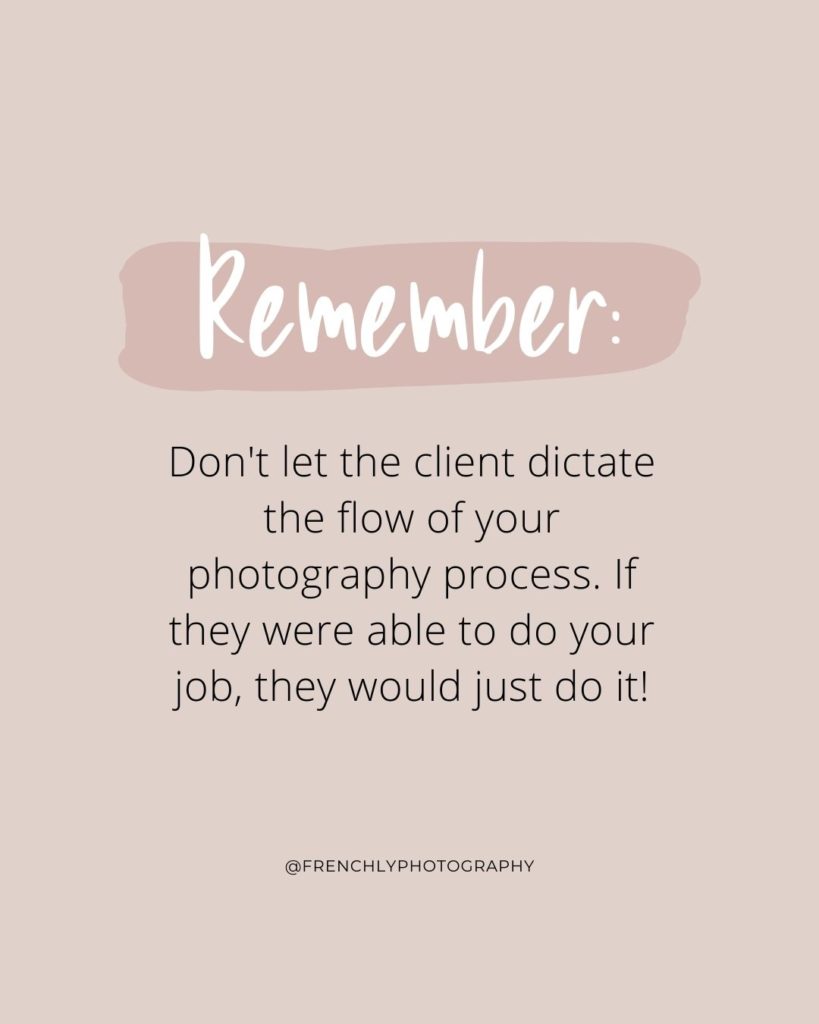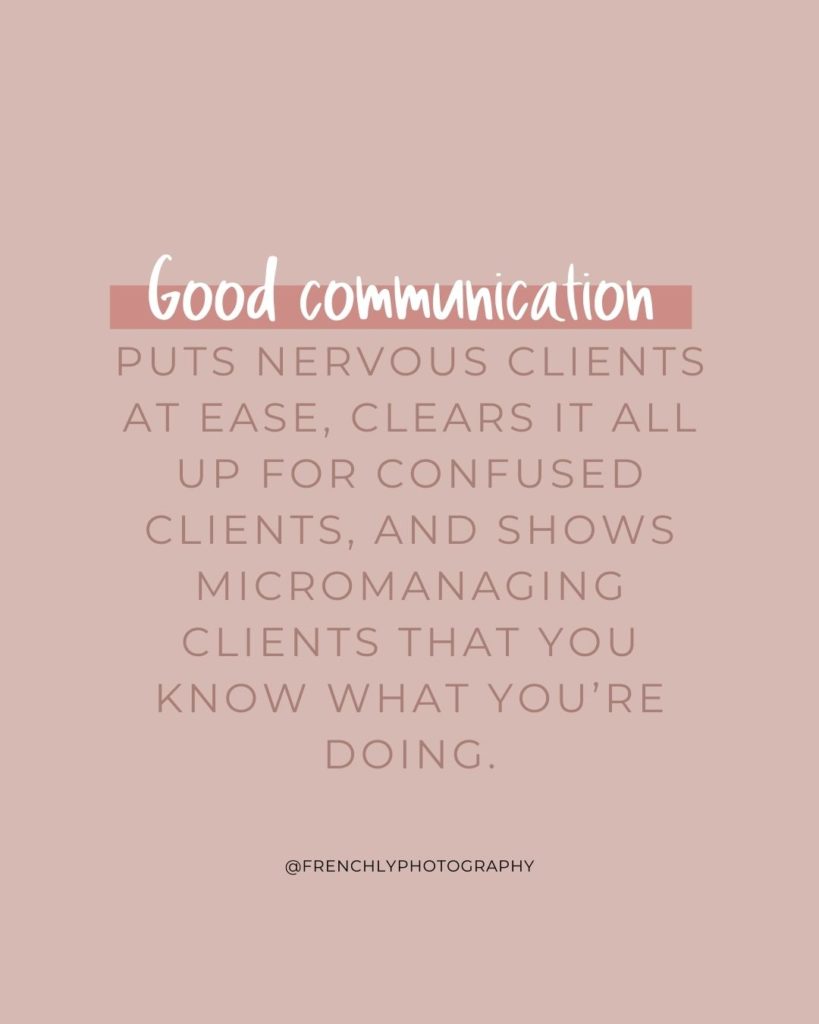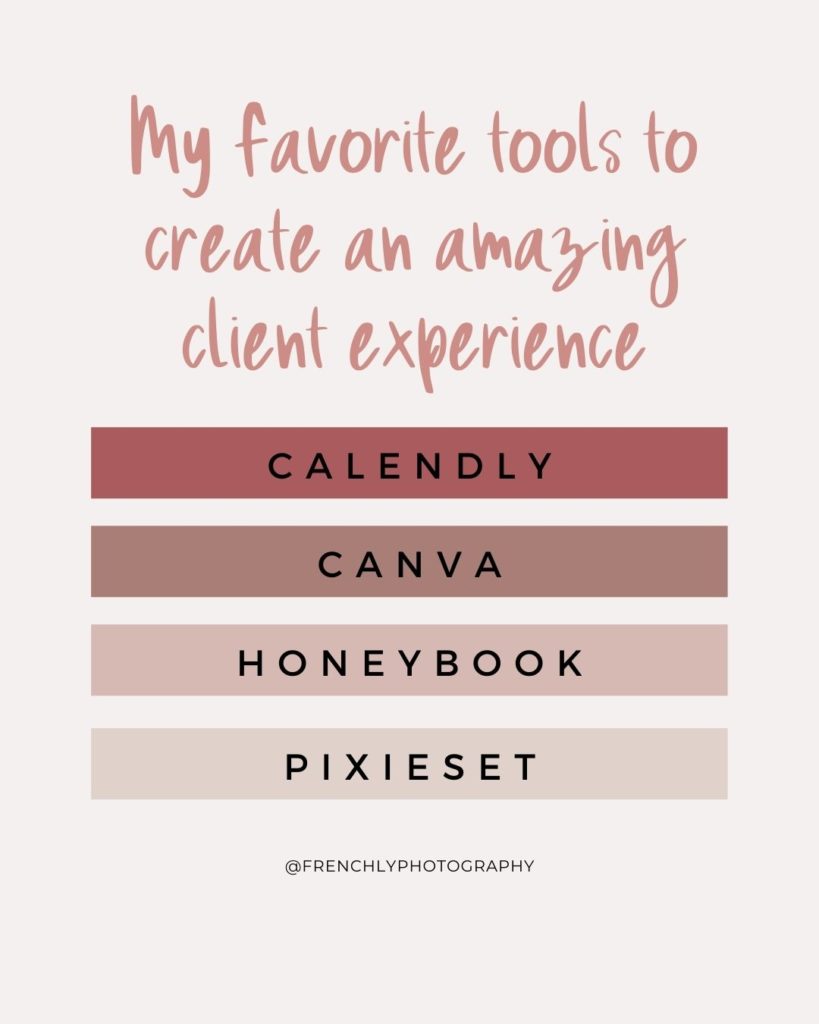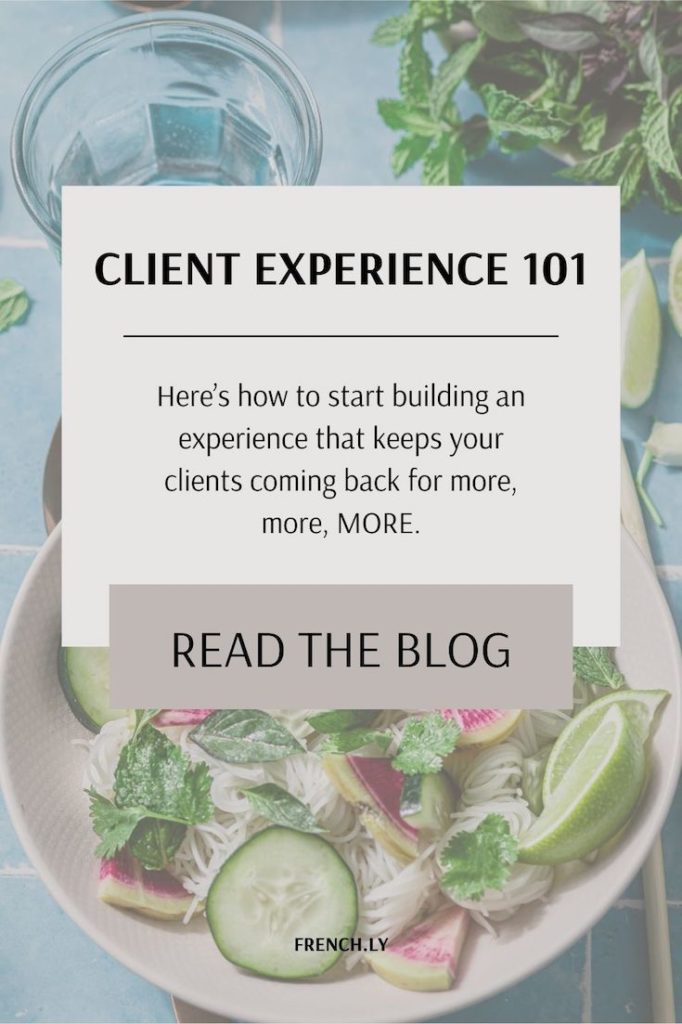In this guide, I show you how to choose who to pitch, how to find the right contact information, and how to craft a winning pitch.
PITCHING TO BRANDS AND IS THE BEST WAY TO GET YOUR IDEAL CLIENTS, AND YOU CAN DO IT WITHOUT FEELING ICKY
Gimme the Guide!
11 FOOD PHOTOGRAPHY DOCUMENTS EXPLAINED
Top Posts
11 PLACES TO SOURCE AFFORDABLE PHOTOGRAPHY PROPS AND BACKDROPS
30+ FOOD STYLING TIPS TO ELEVATE YOUR FOOD PHOTOGRAPHY
Free Resource
About Frenchly
I am a food + product photographer & educator specializing in eco-friendly and sustainable brands. When I am not working with clients, I empower creatives to start their journey by sharing my knowledge on the business of food + product photography.
Client Experience 101
April 13, 2021
There’s a difference between a client who is happy with your work and a client who comes back to you for their EVERY image need.
One likes your photos, and that’s great! But no matter how unique and skilled you are, they can probably show those photos to a handful of other photographers, ask for something similar, and get it.
The other client is a bottomless well of projects you love. They share your name with their friends and grow to trust you more and more with each project you complete. While the first client is definitely a win, the second will keep you in business! And the difference is all in the experience of working with you, not in the deliverables you offer.
While I’ve got lots of in-depth content on elevating your client experience {I’ll link to some of it at the bottom of this post} today I’m enrolling you in Client Experience 101. We’re going to go back to the basics of giving your clients the unforgettable, smooth-as-butter experience that takes them from “I really like these photos” to “how do I get you on retainer, you beautiful photographic genius, you???”
Start the Client Experience Strong
One big mistake I used to make early on was going with the flow. Being flexible is fine, but only to a point! I didn’t want to do anything that might make my client choose another photographer, so I ended up following their lead most of the time.
But here’s the problem with that: if they were able to do my job, they would just do it! So of course, many of those experiences became frustrating for me. I was looking to someone who did not know photography to decide everything. What step came next, how long I would have to complete a project… even when I could be done {my head hurts just thinking about all those reshoots}.

So even if you still feel butterflies in your stomach as you reach out to new brands, it’s important to come across confident and knowledgeable.
- Have a process {even if you adjust it over time}
- Pitch to ideal brands {instead of just waiting for someone to come to you}
- Leverage yourself as a consultant and expert {don’t just be their paid shutter finger}
Make It Easy for Them
If your process is confusing or feels like a lot of work to your client, that’s what they’ll think of when they think of you. No matter how incredible your images are, they are not your client’s whole world! They have a full workload and personal responsibilities, just like everyone else.
But if you make it effortless? How could they not come back over and over again?!
Some of the ways I make it effortless for my clients:
- They can easily book a discovery call with me based on their availability, with just a couple of clicks.
- Before the call, they fill out a questionnaire. This familiarizes me with their needs without adding time to our call or asking them to remember all the things on the spot.
- I use branded documents I create in Canva so they always have the right info at the right time!
- I send contracts they can sign digitally, straight to their inbox.
- Their invoices can also be paid in a few, easy clicks from within an email.
- I use a Gallery like Pixieset to deliver the images. They can select their favorite images right from the galleries!
{Have I mentioned lately how much I adore my CRM, Honeybook? That’s what makes so much of this possible!}
By the way, if you’re ready to create some branded documents of your own, my Client Proposal Toolkit is going to make your life a LOT easier! You’ll look super professional, save all kinds of time, and give your client the next level of the experience they’re craving.
Communicate
Do I sound like a broken record when I talk about communication?
Maybe, but I have no plans to stop!
Good communication is the foundation of a stellar client experience. Whatever challenges your client presents {and your client is a human, so yes, there will be challenges} poor communication can make them a hundred times worse.
On the other hand, good communication puts nervous clients at ease, clears it all up for confused clients, and shows micromanaging clients that you know what you’re doing.

Start by identifying any questions you are being asked by all your clients. They’re having to put time and energy into finding that answer! So how can you give it to them before they have to ask? That’s why I put information about my process into my welcome guide, proposal, and contract. If they don’t know what comes next at ANY given point in a project, they can easily refer back to those documents and breathe a sigh of relief.
And if things don’t go as planned? {Because YOU are human, so yes, things sometimes will not go as planned.} REACH OUT. Be honest. Don’t make them play the guessing game. They may not be thrilled to hear that there’s a delay or that the setup they had their heart set on just isn’t going to work, but they’ll be even less thrilled to be blindsided by that information after waiting days to hear from you.
Be the Expert
You know how a few paragraphs ago we talked about leveraging yourself as an expert? A lot of the time when I say that, the response is, “But I don’t feel like an expert, yet!”
If it makes you feel better, most of us are still waiting to “feel” like experts. So you’re in good company!
Expertise will come with time and experience, but you probably still have a lot to offer, right where you’re at. Just by reading blogs like this one, you’ve already started building a mental library of photography business know-how your client doesn’t have. Don’t be afraid to use that! And try to invest time {and money, if possible} into photography and business education that will give you even more to offer.
In the meantime, there’s one thing you can definitely be an expert on, and that’s your own process. Sit down and really give some thought to how you can do your best work, how to guide your client through their journey easily, and what checkpoints you can make along the way to stay on target.
If they see that you are confident in the way you work, clients are less likely to try and dictate the process. Things will go a lot more smoothly all around, because you—the photographer—will be the one in charge of creating beautiful photos!
Ready to Elevate Your Client Experience?
These are just the basics! They’ll help you a lot, but there’s even more you can do to create a solid, can’t-miss experience for your clients. If you’re ready to keep going, here’s where you can:
- Attract the right clients for you
- Set up client projects
- Improve client communication
- Run successful client shoots
- Elevate your client experience from beginning to end


Leave a Reply Cancel reply
| Created with Showit
| Design by Oregon Lane Studio
| Privacy Policy
© 2020 Frenchly Photography
Back to Top
THE WEBSITE
THE BLOG
Helping brands and businesses promote a happy, healthy and sustainable lifestyle through stunning food and product photography
I love your blog posts! Thank you so much for sharing this type of information. This post in particular is very helpful because right now I’m in the process of defining how my process is going to be . I have the proposal toolkit and I’ve been working on it for my first potential client 😊. I have a some questions: what do you think about putting together in a document the proposal or estimate and the terms and conditions of the contract? I mean, instead of having two separate documents maybe I could put at the end of the estimate section the term of the contract and finish with the signatures (digital). This way when the client receives the estimate and agree he can immediately sign it and send it to me.
The second question is about the questionnaire. Could I collect all the information in a questionnaire before having a call with the client or is it better to fill the all questionnaire with the client? I think the second option would be more time consuming. I would appreciate if you could give me your thoughts about it. Thank you so much!
Hi Jennifer!
Thank you so much of your questions 🙂
Regarding the first one, having one document that gathers the estimates and terms and conditions is totally fine. I know for example that this is how it works in France for example, rather than having a separate contract. I think whatever works for you and creates a better experience for the client is always a good idea 🙂
For the second question, it really is up to you. I used to collect the information in the questionnaire so I would have everything I need before the call (because the calls were making me nervous). It is totally fine to do it this way, but I noticed that some clients don’t fill to out for lack of time, or find it annoying. So now I ask all the questions on the phone. I still have the questionnaire, but I fill it myself as I am talking to the client on the phone. It is more time-consuming for you, but it can be a better experience for the client, and personally, I like to hear their response rather than read them, I can actually get more information, and help them through the answers.
Hope this helps, let me know if you have any other questions!
Thank you so much for this super useful information! You have a great way of explaining and I love to read everything your share!
Can I ask for your opinion considering having two webpages when you have two different parts in your photography business. Do you think it will be confusing for the different type of clients when you one have one webpage or is it better to keep you hole business together dispite the different clients you want to reach ?
Wish you a great day!
Hi Jessica!
Thank you so much for your message and for your question! I think it really depends on how different the parts of your photography business are. For example, if you offer food photography and also portrait / weddings for example, I would absolutely keep those separate, because one is addressed to businesses and the other one to individuals. But, if your services are somewhat similar, or attract the same type of clients, I think it would be fine to have them all onto one website. For example if you shot food and products, and maybe branding photography for business owners, I think you could keep it together. I would however keep separate galleries for each type of work.
I hope it makes sense, let me know if you have further questions!